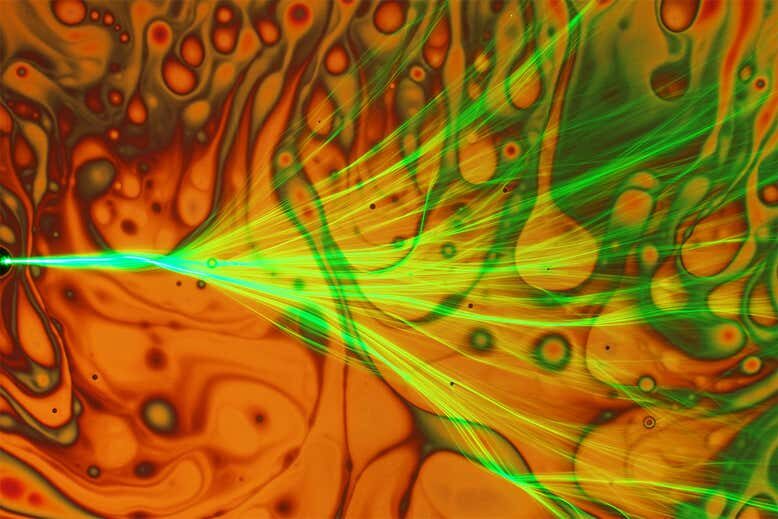This strange branching behaviour has been observed in several different types of waves, but never before in visible light. Mordechai Segev at the Technion-Israel Institute of Technology in Haifa and his colleagues fired a laser across a membrane made of soap, similar to a normal soap bubble you would see when washing your dishes, to observe visible light branching for the first time.
"No one predicted this to happen," says Segev. "It was a complete surprise in the lab." The soap membrane had random variations in its thickness, so the researchers expected the laser beam to separate out into disordered speckles.
Instead, the changes in thickness in the soap membrane split the light into channels like a river dividing into many streams, and each of those channels of light continued propagating forwards before eventually splitting into yet more streams. This happened both on flat and curved soap membranes.
As the molecules in the soap membrane exerted force on the light, the light also exerted force on the molecules, moving them slightly. By changing the intensity of the light, Segev says that it should be possible to change that force over time. "Imagine that you can control the flow of a fluid by controlling the light passed through it," he says.
Systems like this where light is fired through curved soap bubbles could also help scientists understand how light flows through space-time, which general relativity says is also curved because of massive objects stretching the fabric of space and time, says Segev. We could use them to build a sort of model universe in a bubble.
Journal reference: Nature, DOI: 10.1038/s41586-020-2376-8




Comment: Check out the following short videos below to see the awesome visuals and for more on the experiments findings: